Submitted by WA Contents
Austrian Pavilion presents PARTECIPAZIONE / BETEILIGUNG at 2023 Venice Architecture Biennale
Austria Architecture News - Mar 10, 2023 - 13:09 2886 views
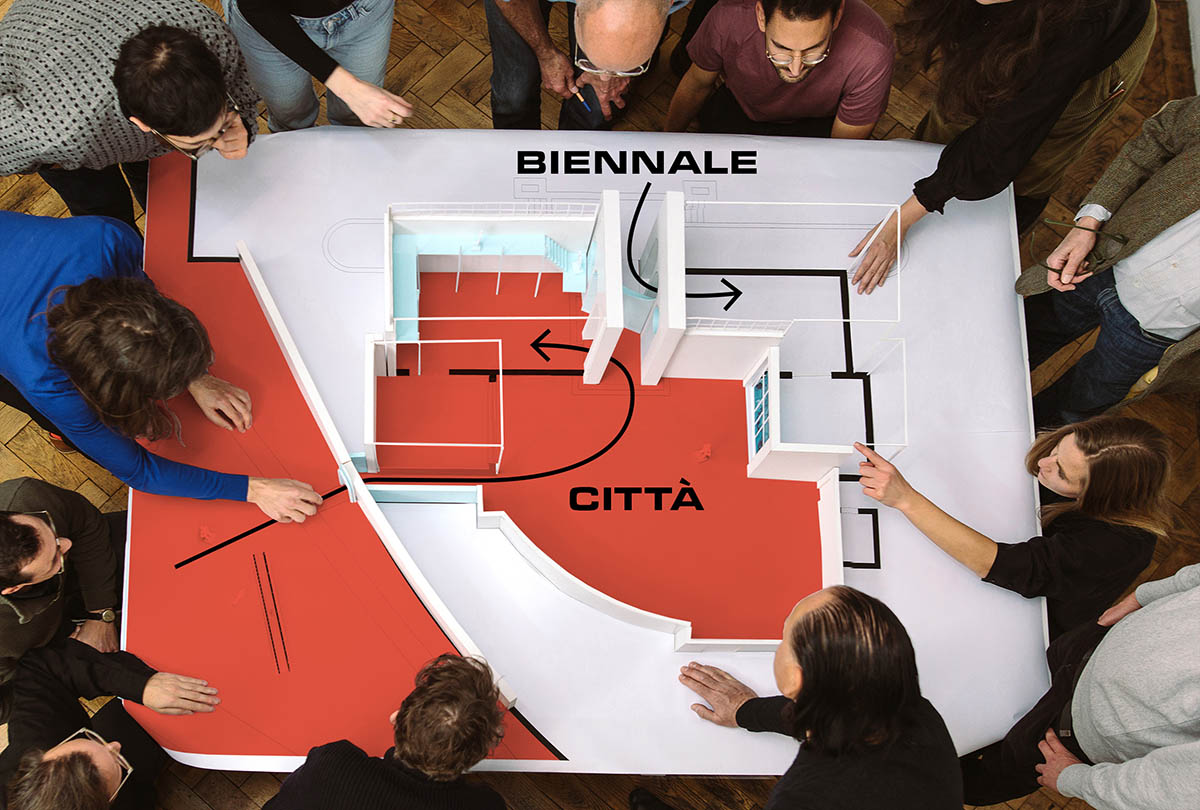
PARTECIPAZIONE / BETEILIGUNG will be the central theme of the Austrian Pavilion at this year's Venice Architecture Biennale.
Curated by the Vienna-based architecture collective AKT and Austrian architect Hermann Czech, the theme, PARTECIPAZIONE / BETEILIGUNG, will explore the role of the Biennale over its political and cultural responsibilities in a shrinking Venice.
Dividing the space into two, AKT & Hermann Czech oganized the pavilion symmetrical, while half of the pavilion is opened to the adjacent district and made freely accessible to the people of Venice, other half of the pavilion will be used as a space triggering debates, talks intensified by a programme and communication.
The Venice Architecture Biennale 2023 will take place from Saturday 20 May to Sunday 26 November, 2023 at the Arsenale and Giardini venues in Italy.
The theme of the 18th Venice Architecture Biennale is The Laboratory of the Future curated by Lesley Lokko.
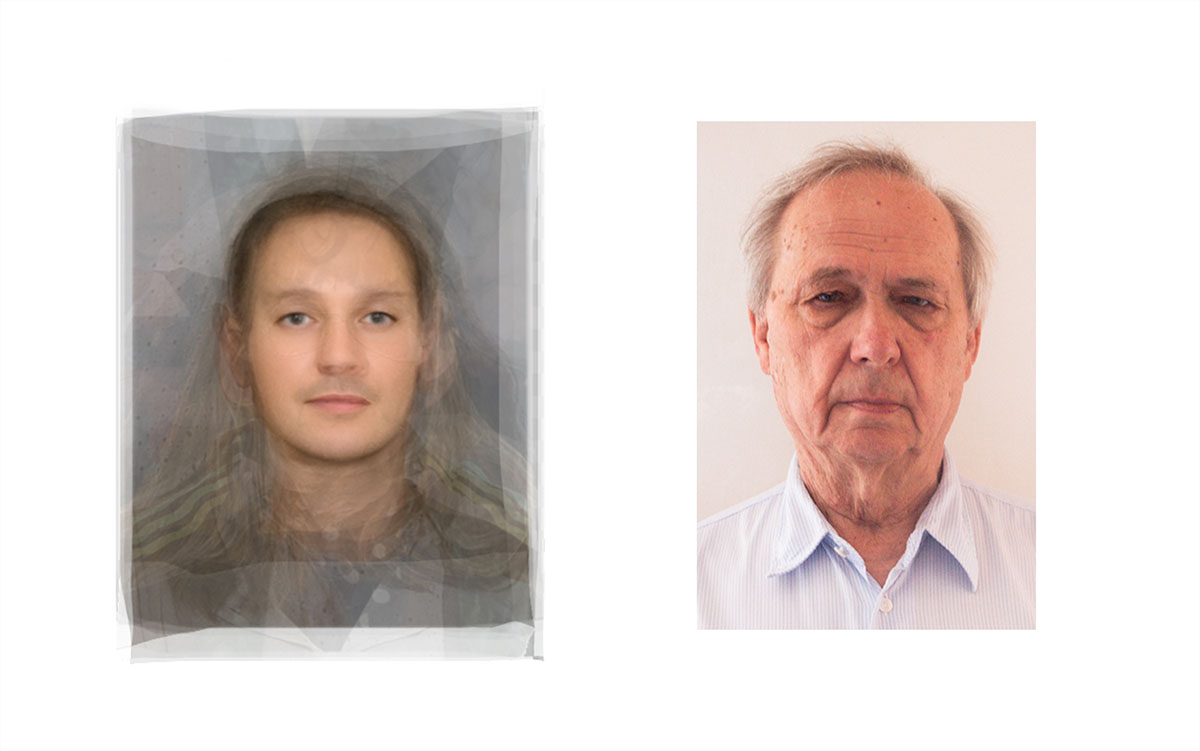
AKT & Hermann Czech – Portrait photos © AKT & Hermann Czech. A portrait of all the members of the seventeen-member architectural collective AKT and Hermann Czech
For the past one and a half years, AKT & Hermann Czech worked with local initiatives and residents to prepare a programme on how to use the space. The Austrian Pavilion, which does not create a one-sided polemic and is controversial from all angles, creates the ground for an exchange of views on Venice' critical situation and the Biennial's vital role in the city's future.
"At the centre of this architectural intervention is the question of the power of disposition over space and the social shifts that architecture triggers in its built form," said the Austrian Pavilion.
"At present, this opening to the city is being met with great resistance from the Biennale and the institutions involved."
"Should the project be rejected, the inaccessible but visible half of the pavilion will become the central exhibit and pivot of a publicly conducted discussion about the role of the Biennale in the city," it added.
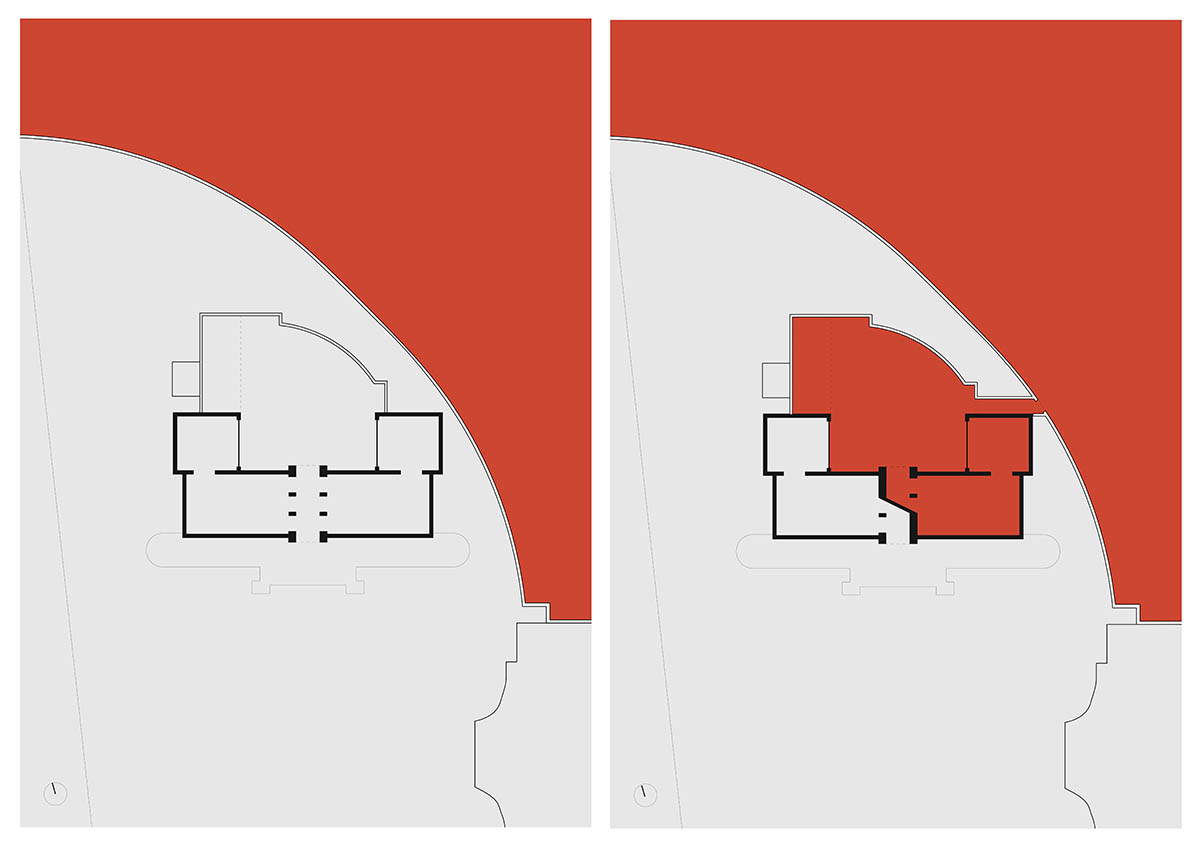
AKT & Hermann Czech – Diagram © AKT & Hermann Czech. The symmetrical pavilion is to be divided, one half opened to the adjacent district and made freely accessible to the people of Venice
For the 18th International Architecture Exhibition, the Vienna-based architecture collective AKT & Hermann Czech have planned a socially effective, temporary conversion of the Austrian Pavilion.
Displacement
For the first time in its recent history, the population of Venice’s old town has reached a historic low, falling below the critical 50,000 mark.
Spatial displacement processes and the loss of essential infrastructure have led to a steady depopulation of the city over decades. In recent years, political promises have been broken and spatial planning control bodies gradually abolished. Social housing construction has now been de facto discontinued. Local life in Venice is increasingly marginalized.
This is supported by a cultural policy that ostensibly aims at a habitable city but works against it in a space-consuming way. Venice can no longer survive without cultural tourism. This now considerably contributes to the preservation of the old city. At the same time, however, through their constant spatial expansion, cultural institutions contribute to depriving ever larger parts of the city of its inhabitants.
Resistance to all these developments has led to an unusually high density of self-organized initiatives among residents. They are united by the common goal of preventing the impending death of the city.
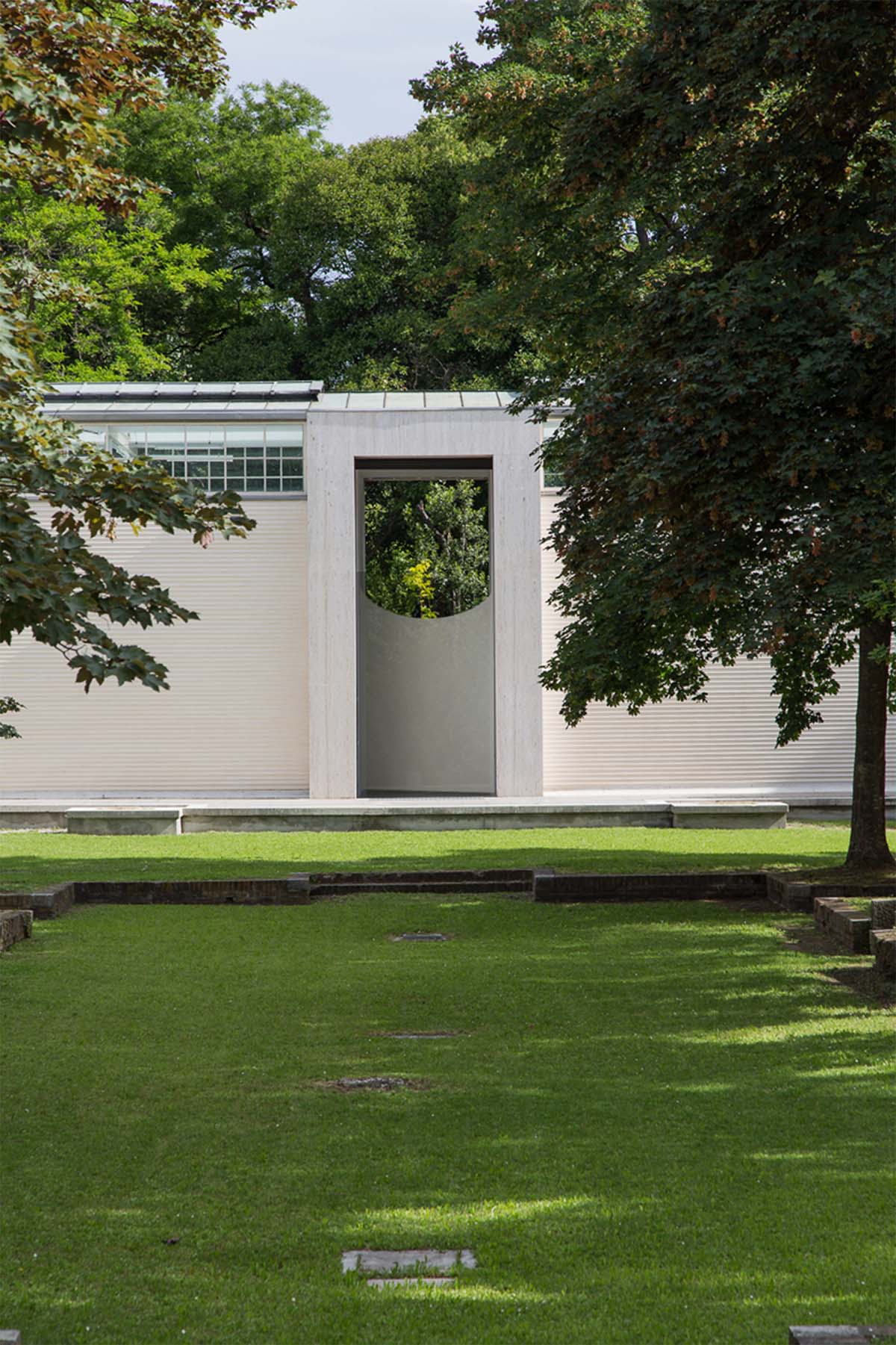
AKT & Hermann Czech – Photo montage © AKT & Hermann Czech Photo by Andreas Balon. The separation between the Biennale and the city will be shifted into the pavilion and become a socially effective architectural intervention
Shifting
The Austrian pavilion is located on the northeastern boundary wall of the Biennale site. The district behind it is one of the few remaining neighbourhoods in Venice still inhabited predominantly by Venetians.
AKT and Hermann Czech plan to open up the historic Biennale wall, to shift the separation between the Biennale and the city into the pavilion and to hand over space to the urban public, a “Laboratory of the Future”.
In this way, from the midst of it, the Austrian pavilion calls upon Venice’s biggest cultural event to face up to its political and cultural responsibility as a “laboratory of the future” in the context of the city.
This is what AKT and Hermann Czech’s offer stands for: to use part of the Giardini site originally dedicated to the general public as a public space again and to make it available to the city’s inhabitants. By participating in the pavilion’s space during the period of the Biennale, the relationship between the city and the Biennale will be visibly negotiated in public.
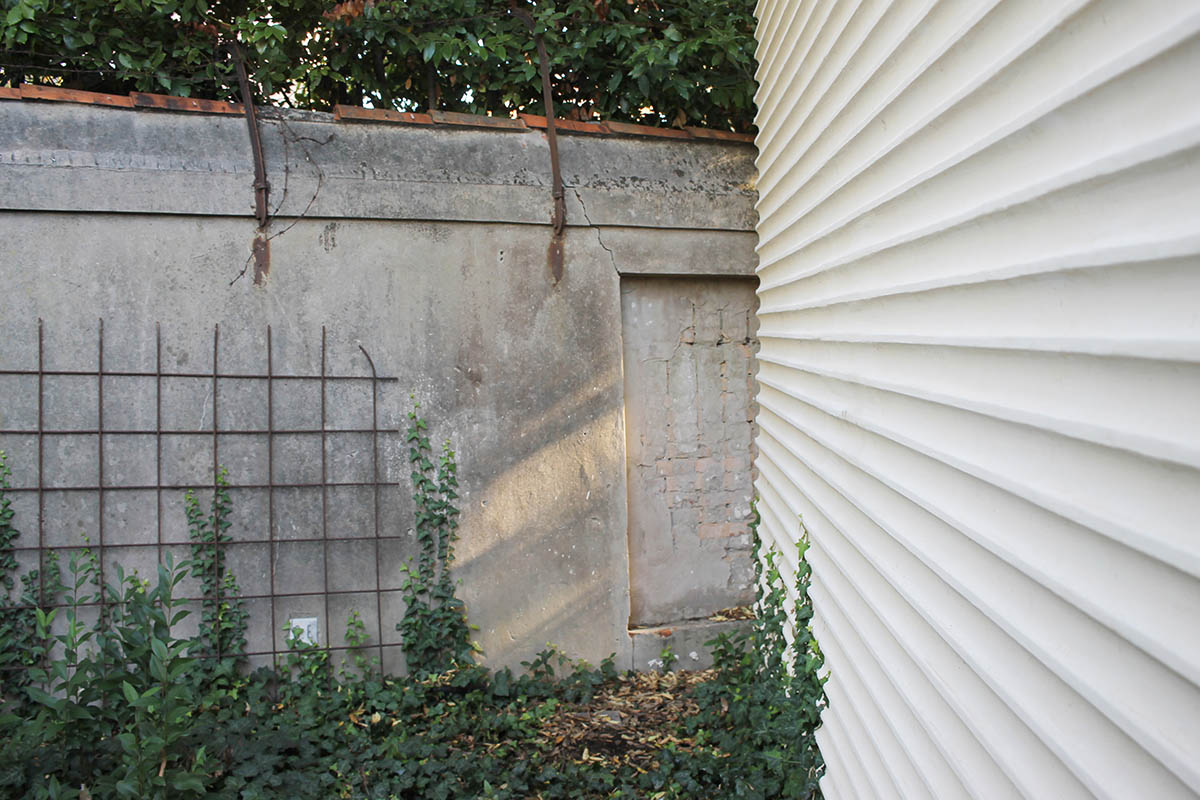
AKT & Hermann Czech – Biennale wall © AKT & Hermann Czech
Partecipazione / Participation
What effect does architecture have, how do social conditions shift when building is carried out? This question is posed by the central exhibit of the exhibition, the dividing wall that separates the symmetrical pavilion between the main rooms. The eastern part of the building, including the courtyard, will be made freely accessible from the city via a newly constructed entrance.
It will thus be handed over to its inhabitants and local initiatives as a meeting space. The western part will remain accessible from the Biennale. There, the conversion of the pavilion by AKT and Hermann Czech as well as the relationship between the Biennale and the city will be thematized in an exhibition and an accompanying program.
Although the other side cannot be reached directly, the city’s residents and visitors to the Biennale will be able to see and hear each other. The interests and demands of the one receive a platform through the presence of the other, as well as visibility and political weight in the context of the Biennale.
Isolation becomes participation in the literal sense: an unrelated separation becomes a neighbourhood that can be experienced in regard to content and space. From within the pavilion, a critical exchange about the current state of the city and the responsibility of the Biennale in its midst emerges through its conversion.
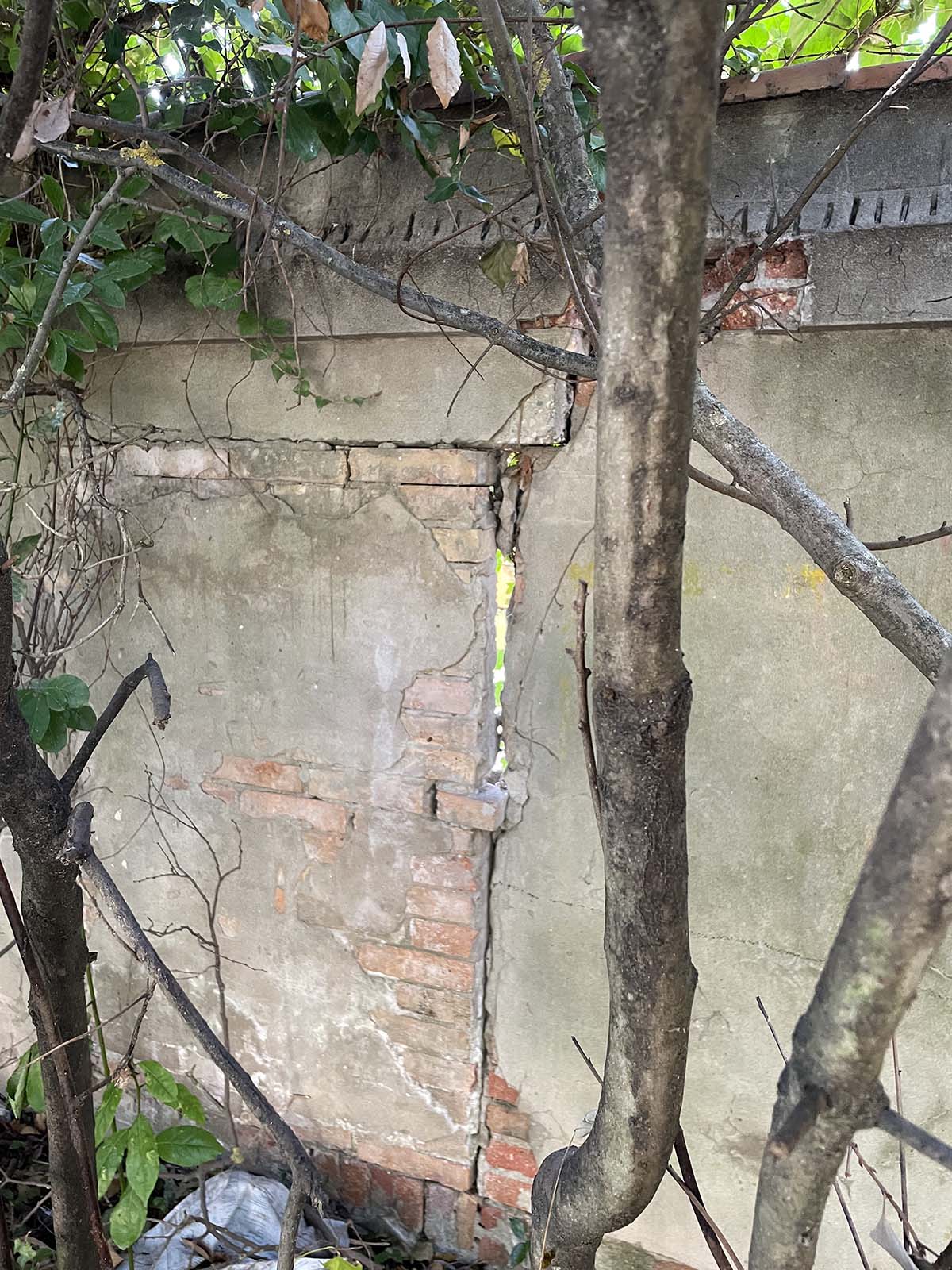
AKT & Hermann Czech – Biennale wall 2 © AKT & Hermann Czech. A subsequently closed opening in the outer wall of the Giardini area, directly behind the Austrian Pavilion. Temporary access from the city is planned at this point
Responsibility
Should the planned opening to the city fail due to the resistance of the Biennale and/or the participating institutions, this failure will become the political content of the exhibition.
The architectural intervention for the project will be carried out, except for the prohibited realisation of the opening and will become the central exhibit of the exhibition as an inaccessible empty space.
The half of the pavilion that is then not accessible to the public will become visible to Biennale visitors as a missed opportunity for participation.
The failure as well as its reasons will be documented and contextualized in the course of the exhibition. The political dimensions of the responsibility of cultural institutions will thus be presented to the international audience in an all the more vivid and urgent way.
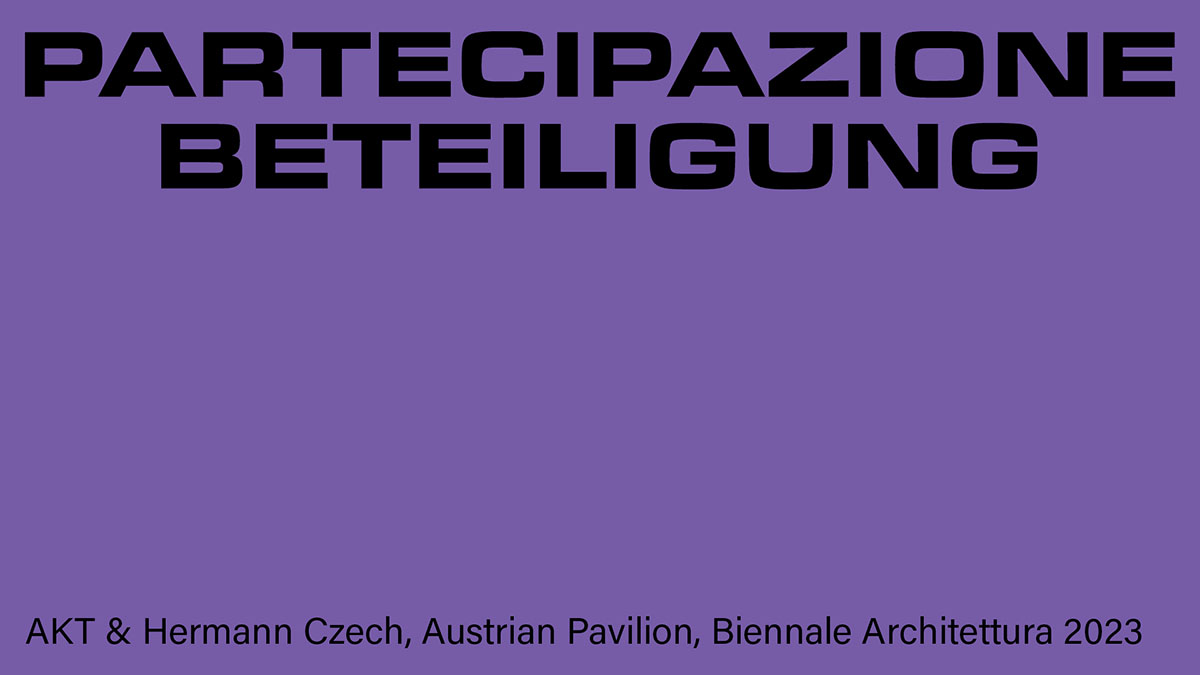
AKT & Hermann Czech – Purple logo © AKT & Hermann Czech
Other pavilions also announced their themes and details for the 2023 Venice Architecture Biennale, such as Gabriela De Matos and Paulo Tavares were announced as the curators of the Brazilian Pavilion, the Danish Pavilion will explore Coastal Imaginaries curated by Josephine Michau.
Moreover, Turkey Pavilion, curated by SO? co-founders Sevince Bayrak and Oral Göktaş, will investigate Ghost Stories: Carrier Bag Theory of Architecture, the U.S. Pavilion will explore the world’s complex relationship to plastic and the British Pavilion will explore Dancing Before The Moon, curated by Joseph Henry, Meneesha Kellay, Sumitra Upham, the Georgian Pavilion will explore January, February, March, focusing on the relationship between the flow of time and energy, the Swiss Pavilion will present Neighbours at this year's exhibition.
More recently, the Korean Pavilion announced its theme, 2086: Together How?, at the Venice Architecture Biennale.
Top image: AKT & Hermann Czech – Model photo © Theresa Wey. Part of the Austrian Pavilion will be opened to the adjacent district and can be used by the population of Venice.
> via Austrian Pavilion
